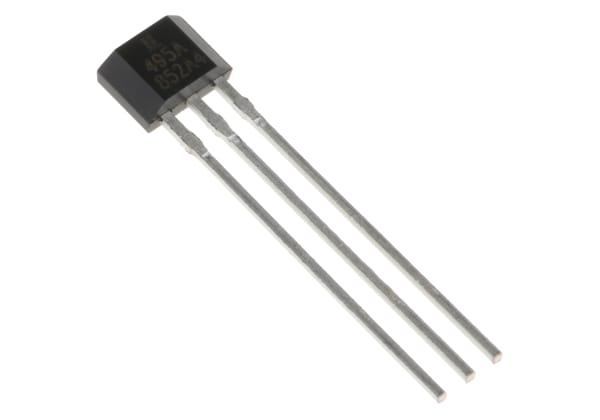- Published 1 Feb 2023
- Last Modified 29 Aug 2023
- 8 min
A Guide to Photoelectric Sensors
Our photoelectric sensors guide explains how to use them and explores the different types available.

Reviewed by Jay Proctor, Technical Support Team Leader (September 2021)
In this introductory guide, we will help you understand what each type of photoelectric sensor is used for and how they work. We will also help you decide how to choose the best photoelectric sensor for a specific job or install location and highlight some of the accessories available for easier mounting of sensing components.
What is a Photoelectric Sensor?
A photoelectric sensor is a sensing module that uses light to detect objects in its field of view. The transmitter element of the sensor projects a light beam into the area it is monitoring, using either visible or infrared light. This beam is often aimed at a target or reflector module, depending on the model.
A receiver component then collects and interprets information about what happened to that beam of light on the way from the emitter. The sensor uses this data to detect and report the presence, absence, or distance of various physical objects or quantities. There are three main types of photoelectric sensors in common use.
What are Photoelectric Sensors Used for?
Many of the most common photoelectric sensor applications are found in industrial or manufacturing environments. This means that the individual components often need to be robust and consistently reliable, which is why they are typically built to withstand harsh environments.
Typical examples might include:
- Checking items on conveyors, especially in production line-ups. These components are ideal for confirming the sizes and shapes of products as they pass through an automated system. An alert is created if the sensor detects any absences or misalignments. This makes them extremely useful for error detection in high volume batch production
- Optical sensing modules are also very effective at counting (or gauging the overall volume of) many small items and objects, often as they are sorted into individual bags or tubs. Food production and pharmaceutical industries make widespread use of photoelectric sensors for this reason, along with many other types of packaging plants
- Photoelectric sensors are frequently used in more high-tech logistics, warehousing and materials handling environments. For both accuracy and safety reasons, automated warehouses using robotic trucks or pick-and-place machinery often rely on accurate sensing, detection and positioning of goods and items
- One of the most familiar uses for this type of sensor technology is the operation of automatic doors. They are often found at the entrances to buildings or secure access areas, as well as in certain types of public transport vehicles to enable automatic entry and exit. Similar sensors are often used to detect unauthorised entry via doors or windows that are supposed to remain closed. This can either be via optical or laser technology
Other key abilities include:
- Colour detection, achievable by a sensor performing multiple successive scans of an object in red, green and blue light spectrums. This can be especially useful in printing and sorting or packaging applications
- Monitoring wider spaces using light grids rather than a single beam. Multiple sensors can be arranged to cover a bigger area with parallel light beams, scanning a two-dimensional zone for the presence or absence of objects or bodies
- Accurate distance measurement through triangulation. Beams from multiple sensors are trained, aligned or reflected to converge on a single receiver module, which can give a precise reading for both position and distance. Again, this is useful in a wide range of applications, including production line and manufacturing systems, or various aspects of automated transport
Photoelectric Sensor Types
In this section, we will look a little more closely at precisely how through-beam sensors, diffuse sensors and retroreflective sensors work.
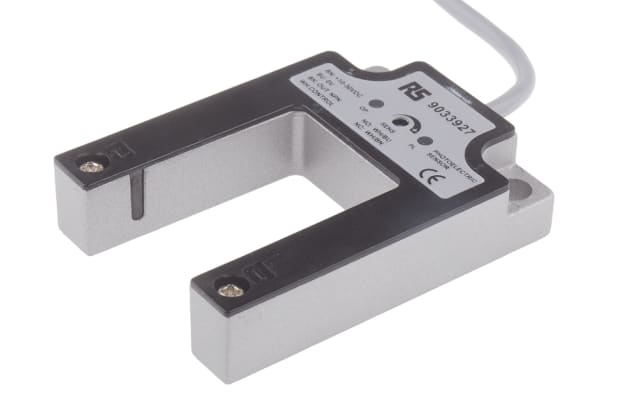
Through-Beam Sensor
A thru-beam or through-beam photoelectric sensor uses two separate modules to function, namely a transmitter and a receiver. These are positioned at either side of the area or object that the sensor is detecting. In most cases, this can either be a very small space, or a wider span.
The transmitter will emit a beam of infrared light in the direction of the receiver. The module can then determine whether any physical object is positioned in the path of the beam.
Certain models of through-beam sensors have more specialised uses and features, for example, the ability to isolate objects from their surroundings. This is known as background suppression. Background suppression can be very useful in environments where there’s a high degree of reflection, which may otherwise make it difficult to detect the true path of a light beam.
Advantages of a through-beam sensor include:
- Stable and reliable readings across a wide range of operational distances
- Ability to detect objects in a wide range of materials, colours, and positions
- No adverse effect on reading accuracy will usually be caused by changes in the light source or the movement or path of the object being sensed
Limitations of a through-beam sensor can include a more complex installation process since there will be wiring required at both ends.
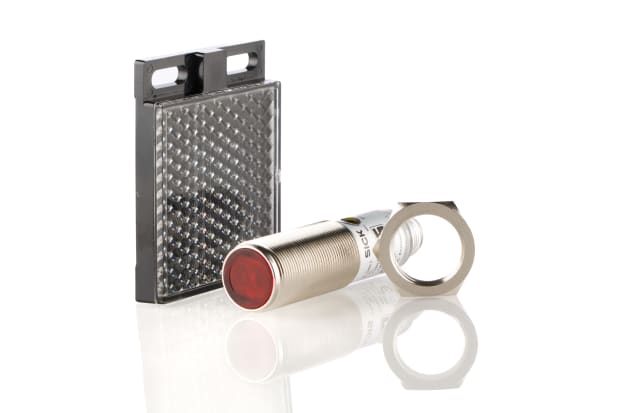
Retroreflective Sensor
A retro-reflective photoelectric sensor uses a separate reflecting module positioned on the other side of the area, span or objects being monitored. This bounces the emitted light beam back towards the transmitter module, which also houses the photosensor. A reading that interprets the intensity and behaviour of the reflected light is then taken back at the source.
Advantages of retroreflective sensors include:
- A relatively wide range of operating distances
- Easier to install and adjust, since only one end of the device requires wiring in - the reflector typically requires no power
- Not particularly affected by object colour or movement path
- Ability to detect translucent or transparent objects, since the light beam travels through the object twice
Limitations of retroreflective sensors include a potential dead zone at a very short range and the fact that they cannot be used to detect highly reflective objects. The latter is because the amount of light bouncing back from anything mirror-like would make it appear that no object was present.
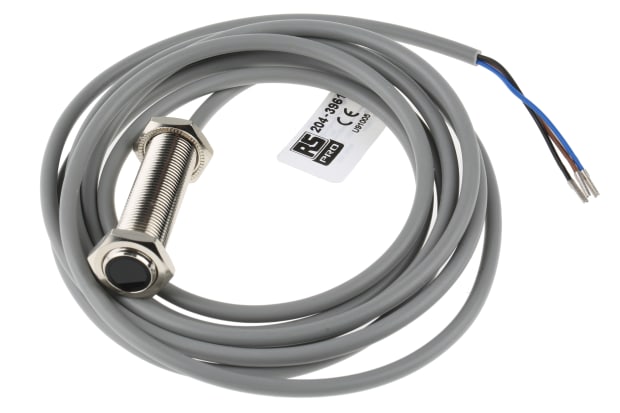
Diffuse Sensor
A diffuse-reflective or diffuse sensor uses the fact that objects in the path of the transmitted beam will themselves reflect a certain amount of light at the sensor.
In other words, they work similarly to a retroreflective model, except they are self-contained and do not use a separate reflecting module. Instead, they simply detect how much light is thrown back after hitting an object. In the normal detecting mode, the diffuse sensor usually does not expect to receive any light back - when it does, this usually indicates an error state.
Advantages of diffuse sensors include:
- A wide range of operational distances (although it is less common for these types to be used at long range)
- Easy to mount and adjust, since the transmitter and receiver are again housed in the same module
Limitations of the diffuse-reflective sensor include the fact that the reliability of readings can be more easily impacted by the object’s shape, colour, material, and distance, as well as by various other environmental conditions. In short, for an object to be detected reliably, it must be able to bounce a reasonable amount of light back at the photosensor.
How Do Photoelectric Sensors Work?
There are three main types of photoelectric sensors in widespread use. These are:
- Through-beam sensors (sometimes written as thru-beam or through beam sensors)
- Diffuse sensors
- Retroreflective sensors (sometimes written as retro-reflective sensors)
Each of these types works slightly differently. In the next section of this guide, we will take a closer look at the main differences between how each one functions, and which type might perform best in specific roles.
However, there are some similarities in how they operate, too:
- All photoelectric sensors rely on the ability to detect what happens to a beam of light they project from a transmitting module
- For the sensor to get a reading, the beam - whether it is of visible light, or invisible infrared light - must make its way to a receiver module. This may be at another location or housed in the same physical instrument as the transmitter. If the latter, there will usually be some sort of reflector component used for bouncing the light beam back at the sensor.
- When the sensor detects the returning beam, it will gauge how much of it is being received/reflected, and how much is blocked or distorted. This enables it to infer the presence or absence of a physical object in its line of sight, as well as to gauge accurate distances and positions
Many such instruments are used at relatively close range, for example on production lines. However, some models can be used to determine accurate positioning and measurement over much longer distances than many other sensor types.
Photoelectric sensors are fast, highly responsive, and - unlike several other kinds of sensor modules - do not require direct contact or very close proximity for accurate object detection. They are not limited to detecting objects made from certain materials or possessing specific physical qualities (e.g. radiating heat). They can be distance-settable or fixed-field, depending on application-specific needs.
Photoelectric Sensor Accessories
The majority of photoelectric sensor accessories are designed to improve the performance of sensors or to make mounting, installation and adjustment of the various sensor types easier. Performance-related accessories include items such as power supplies and adaptors while mounting and installation accessories include things like reflectors, reflective tape, and various sorts of plastic fibre-optic (or more heavy-duty glass fibre) cabling.

Mounting Brackets
Numerous types of photoelectric sensor mounting brackets are sold online, to suit various sensor models and mounting locations.
Different mounting brackets can provide the ability for installers to affix different sensors in a range of positions - common options include axial, right-angled and swivel-mount installations. Popular materials for mounting brackets include plastic and plated or stainless steel, again depending on the type and location of install you are doing.
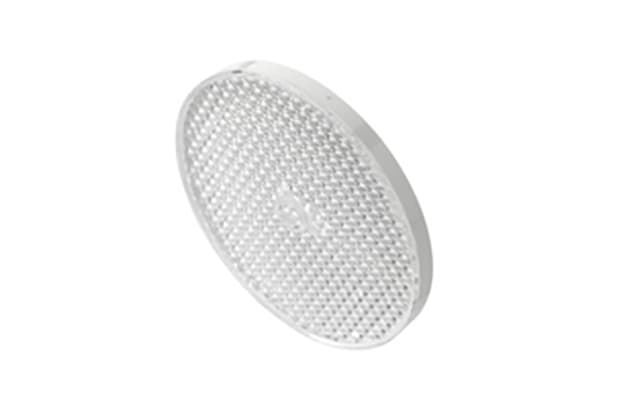
Sensor Reflectors & Reflective Tape
Photoelectric sensor reflectors and reflective tape are used for retroreflective sensors, which rely on bouncing the light beam back from the transmitter to the receiver. Different reflector materials can be chosen for better accuracy in detecting certain types of objects, although many are designed for multipurpose detection.
Physical reflectors are intended for more robust permanent installation and will often be better suited to use in more challenging industrial environments. Many models will include a high IP rating, and be designed specifically to withstand aggressive cleaning products and other potential sources of a chemical attack.
Photoelectric sensor reflective tape is more commonly chosen in scenarios where the installation is temporary. It can also be much cheaper and more convenient if you will frequently need to reposition or replace the reflector module due to various other environmental challenges.
Related Guides
Related links
- Photoelectric Sensors
- RS PRO Retroreflective Photoelectric Sensor 50 mm → 7 m Detection Range
- ifm electronic Retro Reflective Photoelectric Sensor 0.25 → 10 m Detection Range
- ifm electronic Retro Reflective Photoelectric Sensor 0.03 → 1 m Detection Range
- ifm electronic Retro Reflective Photoelectric Sensor 0.2 → 1.5 m Detection Range
- ifm electronic Retro Reflective Photoelectric Sensor 0.05 → 5 m Detection Range
- ifm electronic Retro Reflective Photoelectric Sensor 3 m Detection Range
- ifm electronic Retro Reflective Photoelectric Sensor 0.3 → 22 m Detection Range
